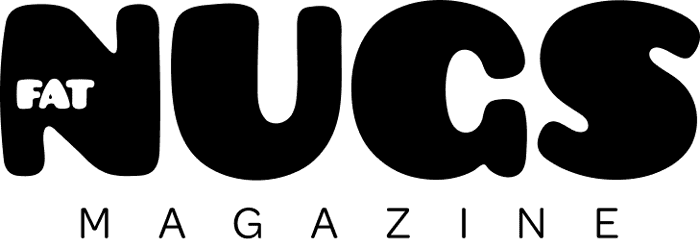This idea that the cannabis industry cannot find banking is a myth…. there, I said it!
In most of my prospecting discussions these days, I find myself in competitive situations – I’m being shopped. My prospective cannabis customer is more than likely also talking to one or more other cannabis-friendly financial institutions, and I have to win their business. Sure, there was a time in my early cannabis banking days when it felt like I had a captive audience. Today the discussions around cannabis banking are really around capability, capacity, and cost.
A funny aside: when Dustin approached me about writing for Fat Nugs, I immediately suggested “How about an article about why cannabis banking costs more?”. Dustin replied, “Just don’t send us some latent piece that passes off extra fees as necessary, because we all know that’s bullshit.” And this was when he was trying to convince me to write for him!
Attention cannabis industry – you have yourself a fierce advocate over at Fat Nugs Magazine!
The Cost of Cannabis Banking
So, let’s talk about it, why does cannabis banking cost more?
Let’s take a small step back – obviously, banks are businesses also, and like all businesses, they need to make money (credit unions as well, despite their NFP status, which is a whole controversy in the financial services realm that we needn’t get into here). How do banks make money? By lending money. (Hopefully, it’s obvious that this is a very high-level and overly simplified explanation just to set the stage for our discussion.)
There is an old saw: pay 3, charge 6, on the golf course by 4. Conceptually the business is fairly simple: Net Interest Margin (NIM). If the bank is paying 3% in interest costs and charging 6% on loans outstanding, the business is making 3% on outstanding loans. Easy Peasy, right? Except, again, like all businesses, there’s the cost to doing business.
Breaking Down the Cost of Banking
Depending on your age, you might remember that “free checking” has not always been a thing. Clearly it is not free for the bank to house an account. Even the most basic personal checking account carries a certain base cost, if only just to clear checks, ACHs, etc. How much cost varies from institution to institution depending on efficiency, assets under management (AUM), etc., but for our purposes let’s say it’s somewhere in the $300 a year range, which neatly works out to $25 a month.
Let’s say your bank’s NIM averages out to 3%. In our hypothetical situation, this institution would need an account with a minimum $10,000 average balance just to break even, and/or they would need to charge fees. And this is just for a plain vanilla personal checking account.
So, why does cannabis banking cost more? Well, because it costs the bank more; more than that plain vanilla account. A lot more.
The Problem with Cannabis Banking
On paper, cannabis banking should not exist, proceeds from the state-legal but still federally illegal cannabis industry can be considered money laundering. Cannabis banking today exists because of a set of guidance that FinCEN published in 2014. You are likely familiar with the source document for said guidance – The Cole Memo. It is essentially a copy and paste of the Cole Memo, including the “priorities”.
Let’s take just one of those priorities – “Preventing the distribution of marijuana to minors”. If you’re the bank/credit union, and it’s your responsibility to ensure that your cannabis customers are “preventing the distribution of marijuana to minors”, how would you do it? There are a multitude of ways, and it has evolved a lot over the years, but I’m going to assume that you’re thinking of things like there are ID checks for entrance; ID checks (again) at the register, etc, All good ideas, so by capturing POS data; visiting the store and verifying ID checks, etc., etc., we are good, right? Maybe, but it’s a lot of work, a lot more than that plain vanilla checking account. And – there’s still seven more priorities to cover.
There are companies selling software/services to help address these issues. But they add to the cost, of course. One well-known vendor in the space charges in the 6 figures range + percentages of overall assets! In our example above, if this hypothetical bank had $10,000,000 of cannabis money, it would make about $300,000 per annum based on that 3% NIM, but it would be paying almost half of it to this vendor just to satisfy the basics. So, at $10,000,000 dollars of cannabis deposits, this hypothetical cannabis banking program is losing money, a lot of money. And we haven’t even discussed hiring or FTE hours.
Finding the Best Cannabis Bank
What can/should you do as a cannabis business owner? I might suggest that instead of shopping for the cheapest fees, or the best rates, you put some effort into understanding the financial institution’s compliance/monitoring/onboarding process.
Does it sound overly burdensome or complex? Are they asking for things that don’t sound like it has anything to do with your banking? In general, the closer to “normal” banking it sounds, the more sustainable it is for the bank to maintain. If they have a team of “cannabis bankers” using made-up terms that don’t otherwise exist in banking, that might be a bad sign.
Also, interest-bearing accounts are more available now. Financial institutions are likely more willing to offer an interest account, a standard expense for any FI, over waiving fees. This might sound weird to say, but you want your bank/credit union to make money, otherwise, they will either never invest in the program, or worse – they’ll get out. Recently a bank in my local market rolled out a “free checking” option for cannabis banking. That program shut down in under a year.
Ironically most of these issues can be mitigated with something the cannabis industry would very much welcome – lending. However, even if the institution is willing, there are some challenges, both real and perceived, to lending to cannabis. But let’s address that in a future article.
About the Author
Peter Su is a banking executive with 20+ years of experience across the banking and financial services spectrum. He has personally spearheaded 3 separate cannabis banking programs as team lead at commercial banks and has acted as a consultant to dozens of other financial institutions banking cannabis across the country.
An active member of the cannabis industry, Peter is currently an advisory board member to CTrust and to The Cannabis Summit. Additionally, he writes about the cannabis industry for Rolling Stone on the Rolling Stone Cannabis Culture Council.




